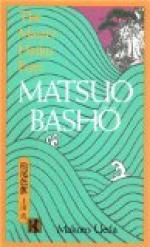|
This section contains 10,263 words (approx. 35 pages at 300 words per page) |

|
SOURCE: “The Loneliness of Matsuo Bashō,” in The Biographical Process: Studies in the History and Psychology of Religion, edited by Frank E. Reynolds and Donald Capps, Mouton, 1976, pp. 363-91.
In the following excerpt, Foard discusses the three stages of Bashō's life: his early years, his poetic and spiritual wanderings, and his life as a literary and religious master. The critic proposes that Bashō utilized his haiku in an attempt to overcome his isolation and discover his true self.
In 1918, Akutagawa Ryūnosuke, one of the leading Japanese writers of this century, wrote a miniature piece of historical fiction called ‘Karenoshō’ (‘Notes on Withered Fields’).1 It described the death of Matsuo Bashō (1644-1694), greatest of all haiku poets and one of the giants of Japan's cultural heritage, whose most famous verses can today be quoted by virtually every Japanese. One of those verses, reputed to be his last...
|
This section contains 10,263 words (approx. 35 pages at 300 words per page) |

|


